Understanding Low Clouds in a Remote Marine Environment
Published: 24 August 2021
After just a few years, an ARM campaign in the cloud-decked Azores spins off prolific research on aerosol effects

West of Portugal, in the Azores, lies tranquil Graciosa Island. The interior, dry and rolling, is a patchwork of grain fields, vineyards, and pastures dotted with volcanic cones of ancient cinder.
Aside from being lovely, Graciosa is also one of the best places in the world to observe stratocumulus clouds in the marine boundary layer. Gathered above the eastern North Atlantic in deck-like layers, reflecting and absorbing sunlight, such clouds are known to have profound influences on Earth’s climate.
Yet such subtropical low marine clouds are poorly represented in earth system models, largely because they are difficult to continuously observe. Scientists wonder: What are the microphysical and macrophysical structures of such clouds? What are their radiative effects and―especially―how do they respond to changes in greenhouse gases and aerosols?
Aerosols are ultrafine liquid and solid particles suspended in the air. They influence cloud formation, precipitation, and surface energy budgets. In the case of low marine clouds near Graciosa, aerosols can come from close by (sea spray, for instance) or from far away, including distant continental forest fires.
The optical properties of such aerosols can vary widely. So can the concentrations of cloud condensation nuclei (CCN), which are cloud seeds, in effect. CCN provide a non-gas platform on which water vapor can condense.
All these complications and all the vast marine distance so challenging to observe inspired a 2017–2018 field campaign designed to track down some answers.
The Aerosol and Cloud Experiments in the Eastern North Atlantic (ACE-ENA) campaign was led by aerosol scientist Jian Wang, now at Washington University in St. Louis. (Wang was at Brookhaven National Laboratory in New York when he started in the ACE-ENA role.)
The U.S. Department of Energy’s (DOE’s) Atmospheric Radiation Measurement (ARM) user facility conducted the ACE-ENA campaign.
Surface and Air Data

The campaign was possible, in part, because ARM established its newest fixed-site atmospheric observatory, the Eastern North Atlantic (ENA), on Graciosa in 2013. Its radars, lidars, radiometers, surface arrays of meteorological gear, aerosol instrumentation, and more were already poised to characterize atmospheric and boundary-layer systems.
However, puzzling out low marine clouds also requires airborne measurements. Such measurements capture the vertical structure of stratocumulus clouds, along with variables that are measured on the horizontal plane, including drizzle and trace gases.
ARM was ready for airborne forays too. Its Gulfstream-159 (G-1) research aircraft flew instrumented transects from a Portuguese airfield on Terceira Island in the Azores.
The G-1 deployments covered a variety of conditions during intensive operational periods in summer (mid-2017) and winter (early 2018).
ACE-ENA was a great opportunity because of “the combination of long-term measurements at the surface with the G-1 overflights and the detailed specific instrumentation on the G-1,” says ACE-ENA co-investigator Mike Jensen, a cloud scientist at Brookhaven. ARM retired the G-1 at the end of 2018.
On average, each G-1 flight recorded four to six vertical profiles ranging from near the ocean surface up to the lower free troposphere. That’s as high as 3,000 meters (about 9,840 feet). G-1 instruments swept up data to profile trace gases, the atmospheric state, and aerosol and cloud properties.
The G-1 also recorded conditions on the horizontal plane. Flight patterns ran from near the surface, to just below and within the clouds, to cloud-top level, and also above the clouds.
ACE-ENA’s 39 flights allowed researchers to study the vertical profiles of aerosols and their seasonal variability. (Browse ACE-ENA data in the ARM Data Center.)
A Bounty of Publications
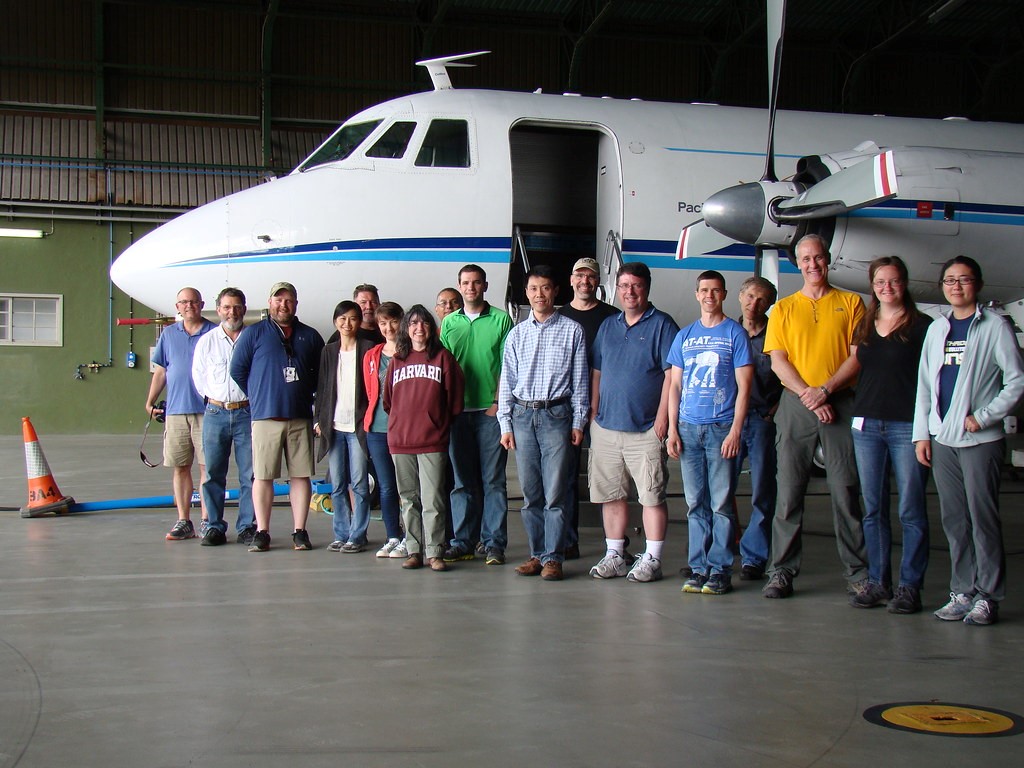
To date, the campaign has inspired many papers and related publications: at least 30, with 10 so far in 2021 alone.
Wang identified four papers as representative examples of ACE-ENA research.
One of the four is a classic campaign summary paper, published by the Bulletin of the American Meteorological Society (BAMS) in July 2021, with Wang as the lead author. All the usual campaign summary ingredients are there: observation strategies, regional weather conditions, and preliminary findings. The paper acknowledges funding from DOE’s Atmospheric System Research (ASR).
Jensen was a co-author, along with 47 others. Reading the list of co-authors is like reading a summary of ACE-ENA targets and technologies. To name just a few:
- aerosols (Allison Aiken, John Shilling, Art Sedlacek)
- research aircraft (Fan Mei, Beat Schmid, Lexie Goldberger)
- new particle formation (Chongai Kuang)
- radar (Joseph Hardin, Pavlos Kollias)
- vertical velocity (Virendra Ghate)
- understanding drizzle intensity and frequency through machine learning (Christine Chiu).
“For the first time, ACE-ENA co-located cloud measurement data,” combining a suite of aircraft instruments with scanning radars on Graciosa, says Chiu, a Colorado State University atmospheric scientist. “It was important for me to be there.”
Chiu was an ACE-ENA co-investigator while at the University of Reading in the United Kingdom.
Aerosol Effects
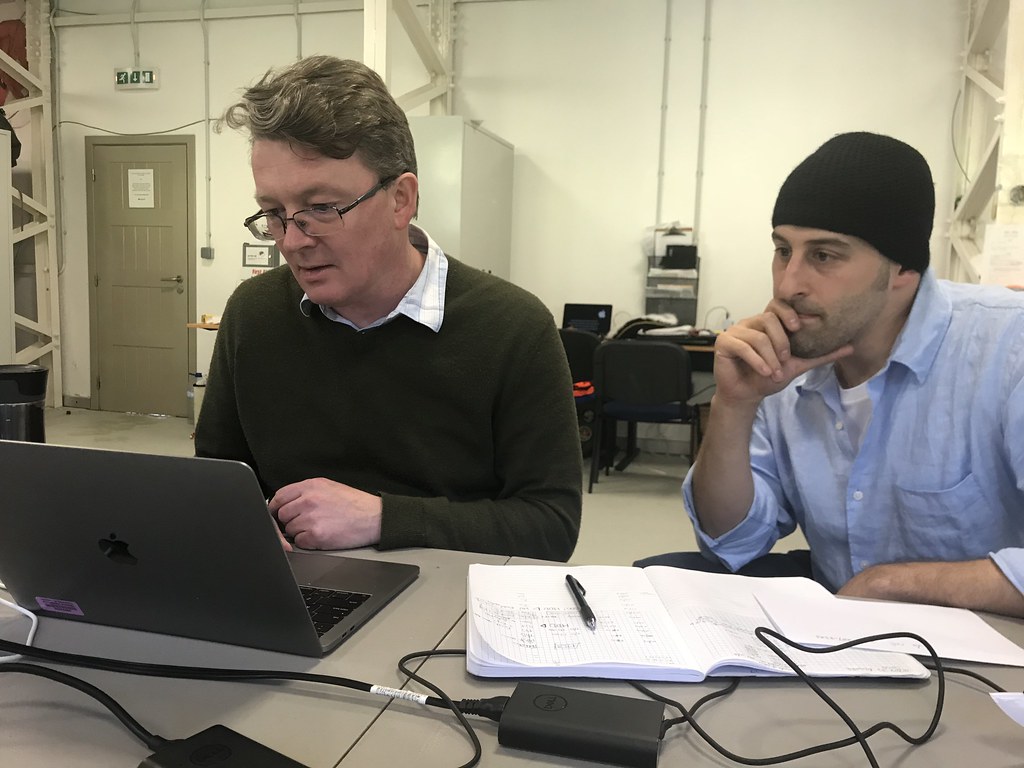
As the summary paper points out, precipitation and albedo—surface reflectivity—in low marine clouds are particularly vulnerable to changes in aerosol properties. Such changes may result from human influences.
ACE-ENA, in turn, was well suited to capturing how aerosols are transported over long distances from continental sources in North America and Africa.
Background aerosol amounts and local aerosol sources are small in remote marine boundary-layer clouds. Even a few events of long-range aerosol transport have a noticeable effect on aerosol population.
The campaign also made it easier to measure cloud and drizzle microphysics in the remote region, as well as CCN budgets.
The more cloud seeds, the more cloud droplets there are. This also changes the size of the droplets and their ability to coalesce to form rain.
Broadly, ACE-ENA’s data sets can be coupled with continuing long-term ENA measurements. That enables a continuing path toward a complete understanding of cloud life cycles, aerosol effects, and CCN in the marine boundary layer.
The campaign will continue to inform present and future studies, say the authors. Study topics include CCN populations, key boundary-layer processes, seasonal aerosol variability, model-sensitivity studies, aerosol effects on seasonal warm rain, and cloud vertical profiles.
New Particle Formation
A January 2021 Nature Communications paper reported “the discovery of new particle formation in the upper part of the marine boundary layer” during ACE-ENA, says Wang, where “newly formed particles may contribute substantially to cloud condensation nuclei population.”
That’s a breakthrough idea. Previously, scientists believed that new particle formation rarely occurred in remote marine boundary layers over open oceans. But the paper’s authors, using ACE-ENA data, showed that such particle formation is actually frequent in the upper part of such boundary layers after cold fronts move through.
The publication’s co-lead authors started the ASR-funded work as postdoctoral researchers at Washington University in St. Louis.
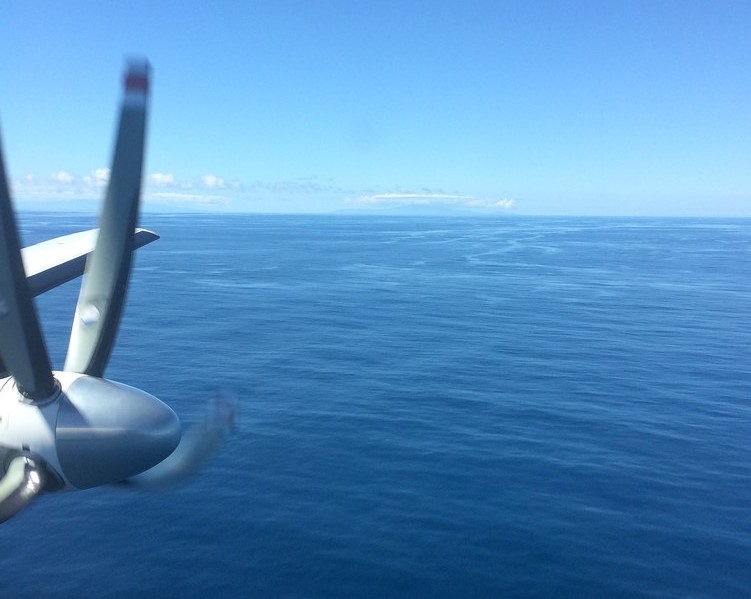
ACE-ENA participant Guangjie Zheng, now at the Max Planck Institute for Chemistry in Germany, performs research that combines airborne and surface measurements. Yang Wang is now at the Particle Measurement and Technology Laboratory at Missouri University of Science and Technology. He specializes in airborne aerosol instruments, as well as others that enable the study of aerosols with transient properties.
Zheng and Wang contend that, during new particle formation, existing particles are stripped out of the upper part of the boundary layer by precipitation, cold air, and the vertical transport of reactive gases upward from the ocean surface. From there, the new particles form, grow, and contribute substantially to CCN numbers.
The paper pivots on a common observation at the ENA site: that the marine boundary layer is often segmented―“decoupled,” in science parlance―into two layers separated by clear air. This happens, for one, in the wake of cold fronts, which create convective activity that deepens boundary layers.
Part of the resulting dynamic is that rising air currents transport trace gases from the mixed surface layer to the upper, decoupled layer. These so-called thermals form cumulus clouds, which create drizzle and precipitation―phenomena that remove large particles.
Meanwhile, sunlight rapidly oxidizes reactive gases from the surface to create nucleation precursors. Such atmospheric nucleating species include sulfuric acid, as well as human-caused and naturally occurring emissions. Some of these species react with atmospheric oxidants to form nanoparticles that take part in cloud-particle nucleation and growth.
New particle formation in the upper boundary layer is important because it generates particles that can grow and eventually become CCN. The particles in the boundary layer can then become cloud droplets and will influence precipitation formation and the radiative properties of the cloud.
“We had not seen these before,” says Jensen, a co-author of the new particle formation paper. “These new particles cannot be detected from just surface-based measurements.”
Aircraft measurements, it turns out, allowed researchers to observe such particles high up, especially the smallest particles that were newly formed, as well as their precursor gases.
Jian Wang, ACE-ENA’s lead scientist, says that the paper’s new insights require further study of particle formation inside the marine boundary layer and the impacts on CCN population.
Getting Warm Rain Right
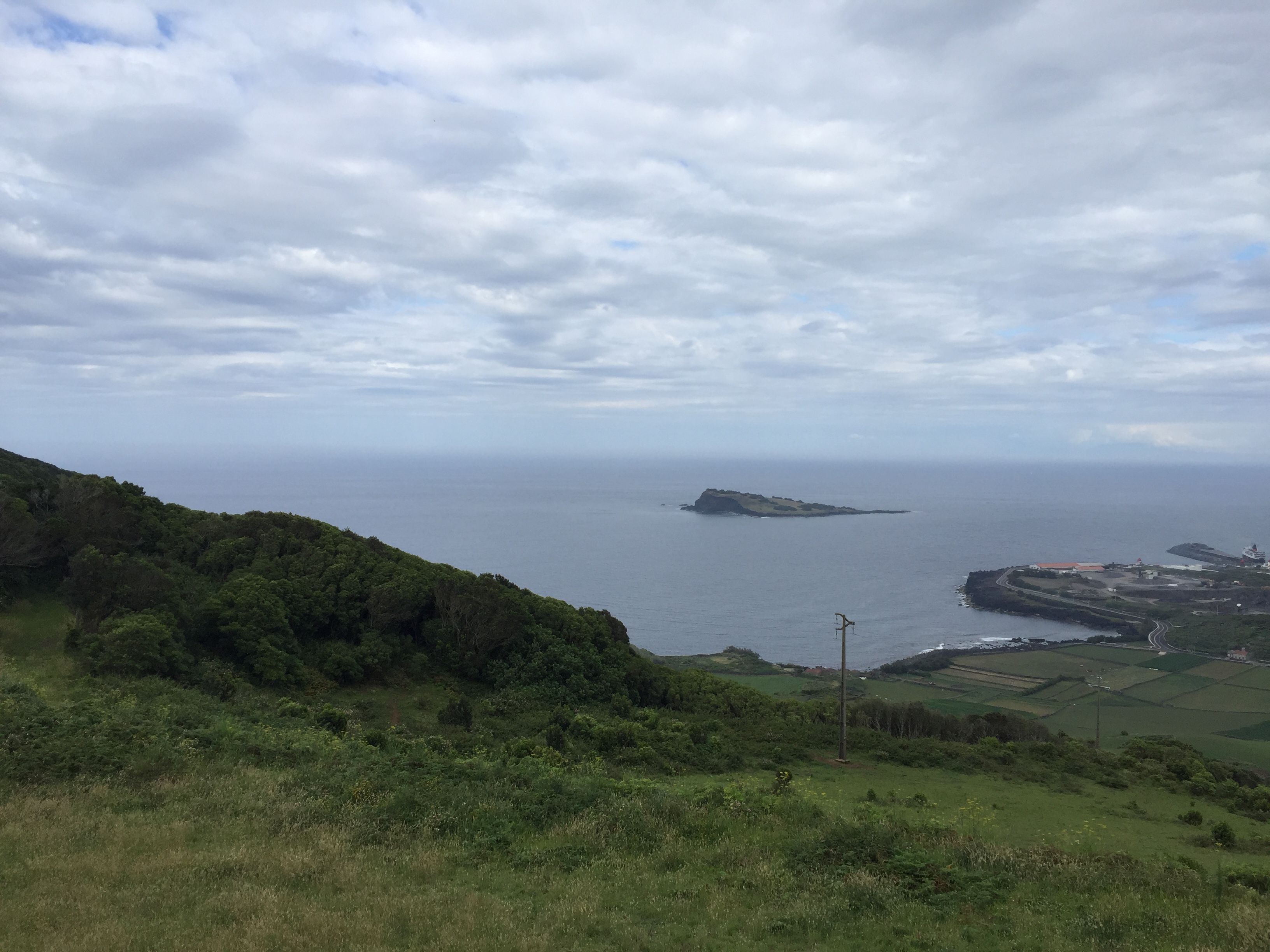
An ASR-funded paper led by Colorado State University’s Chiu earned the third mention among Wang’s examples of representative papers. The article, published online in December 2020, addresses a common set of discrepancies in the way global models represent warm rain in marine boundary-layer cloud decks.
Such models commonly simulate warm rain over oceans that is too frequent, too light, or too heavy―a so-called “intermodal spread” that can vary from observed rain by as much as an order of magnitude.
Getting the rate and intensity of such rain correct is important. The formation of ocean precipitation like this, including a smaller-droplet form of rain called drizzle, significantly influences cloud life cycles, as well as radiative and hydrological budgets.
Wang notes that the Chiu-led paper “describes a novel parameterization (representation) and insight into autoconversion, a key process for the formation of drizzle and precipitation in boundary-layer clouds.”
Autoconversion is a water-coalescence process that expresses the rate at which cloud droplets―too small and slow to fall as rain―collide and stick together to form drizzle drops. (Drizzle drops are smaller than rain drops, which at 0.5 millimeters or more fall rapidly through the atmosphere.)
In models, autoconversion is an important way to represent how clouds begin to form rain because it can change predictions of surface temperatures in climate simulations.
Chiu and her co-authors calculated these cloud-process rates from in situ cloud drop size distributions collected during the summer and winter periods of ACE-ENA. (They analyzed about 93,000 in situ cloud drop size distributions.)
Autoconversion rates calculated from those in situ measurements formed a crucial data set. Chiu used it to train a deep neural network, which is an artificial neural network that mimics the neuron-and-synapse sorting process of the human brain.
This machine learning method can capture complex, nonlinear relationships like those of coalescing water droplets. In turn, the relational decisions derived from machine learning can be applied to ARM long-term radar observations.
“This is a critical step,” says Chiu, “and a great example of how ACE-ENA will continue to have scientific significance beyond.”
The new autoconversion estimates, say Chiu and her co-authors, have an uncertainty of just 15%. That outperforms existing model parameterizations.
They also discovered a robust, “surprising but real” relationship between autoconversion and drizzle number concentration, a factor that is missing in current parameterizations.
Turbulent Mixing

The cloud-top albedo of marine boundary-layer clouds exceeds the darker surface of the ocean below, resulting in a significant net cooling effect. Yet their properties, when considered at subgrid scales, display wide variability in aerosol concentration, droplet number, precipitation rates, and other factors.
According to a fourth ACE-ENA study, partly funded by ASR, this variability at small scales is poorly represented, causing “considerable errors in global climate models.”
The lead author is San Jose State University postdoctoral researcher Neel Desai, who worked on the paper as a postdoctoral researcher at Brookhaven.
Stratocumulus clouds shading the eastern North Atlantic are usually small in vertical dimension. But relative to altitude, the turbulent entrainment mixing they display can lead to significant variations in cloud droplet number size and population.
Entrainment mixing strongly influences cloud macrophysical and microphysical properties. It happens when usually dry, unsaturated air mixes into a cloud laterally or vertically from outside.
HOLODEC Images
Desai and his co-authors analyzed small-scale entrainment-mixing processes by using the holographic detector for clouds (HOLODEC), a high-resolution airborne holographic probe.
“HOLODEC is quite unique,” both for its technology and its operation, says co-author Susanne Glienke, who oversaw the instrument during ACE-ENA’s 39 research flights. Glienke is now a postdoctoral researcher at Pacific Northwest National Laboratory in Washington state.
The HOLODEC probe, an ACE-ENA guest instrument, rhythmically shot a radar pulse into centimeter-scale incoming parcels of cloud. A camera captured droplet images scattered by the laser into analyzable three-dimensional patterns of light called holograms.
During each ACE-ENA flight, HOLODEC captured tens of thousands of holograms―about 1 terabyte of data. (To learn more about HOLODEC, read this blog by Glienke.)
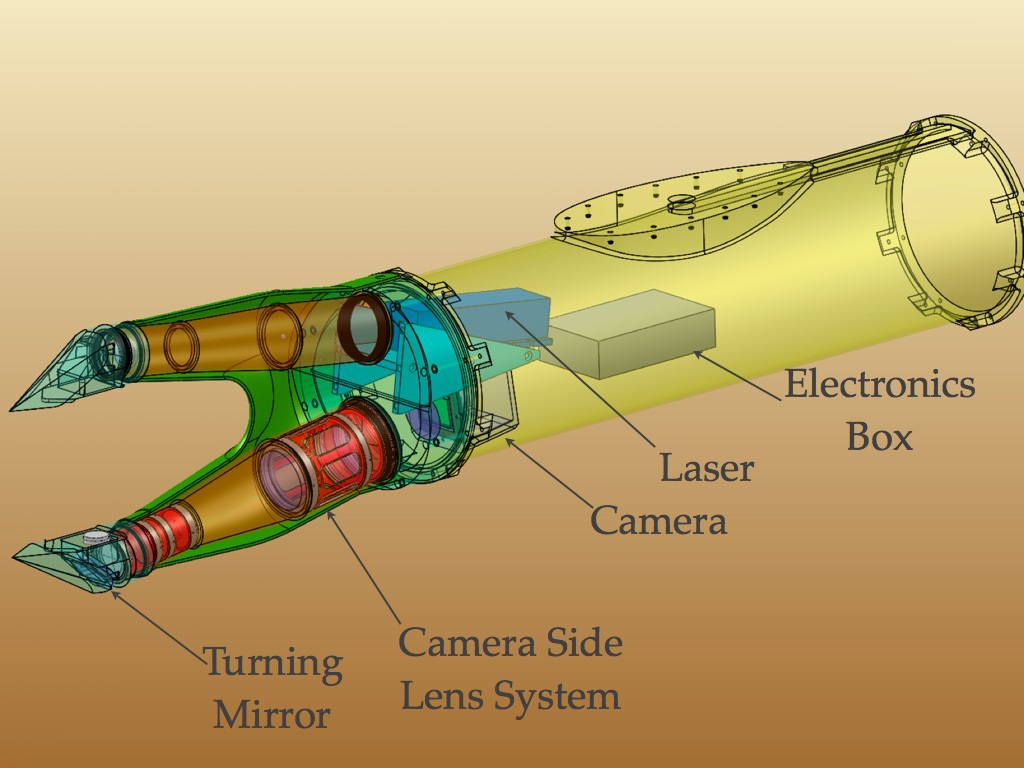
Desai and his co-authors compared the airborne data with local turbulence measurements. By using holographic, centimeter-scale size distributions and number concentrations, they avoided potential errors from averaging microphysical processes across meter-scale cloud regions.
The authors also proposed a modified time equation that reflects observed mixing mechanisms and explains how cloud microphysics vary with cloud height and localized in-cloud turbulence.
Speeding the Process
The Desai paper relies on data from just one research flight because so few cases were available when the paper was written. On a regular computer, each hologram takes three hours to reconstruct. But Glienke has reduced per-hologram processing to as little as 10 minutes by using ARM’s high-performance computer assets.
She is about halfway through processing the campaign’s two-season HOLODEC measurements. Go to ARM’s Data Discovery for what is there already.
Given the importance of marine stratocumulus cloud decks to the Earth’s climate, researchers will keep tapping the rich ACE-ENA data.
As proof, a joint special journal issue featuring papers from ACE-ENA and other North Atlantic campaigns has been organized online by the journals Atmospheric Chemistry and Physics and Atmospheric Measurement Techniques. So far, 16 papers are on the citation list.
Keep up with the Atmospheric Observer
Updates on ARM news, events, and opportunities delivered to your inbox
ARM User Profile
ARM welcomes users from all institutions and nations. A free ARM user account is needed to access ARM data.


















